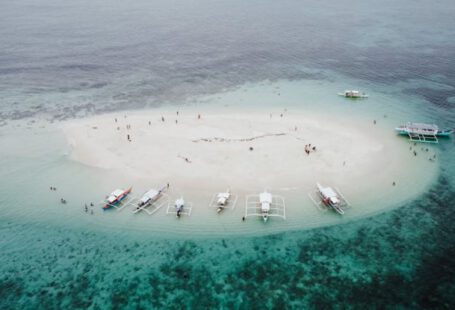Exploring the vibrant and diverse ecosystem of a coral reef can be a captivating experience for underwater photographers. Capturing the beauty of this underwater world requires a unique set of skills and techniques. In this article, we will delve into some essential tips for underwater photography to help you make the most of your reef photography adventures.
Choosing the Right Equipment
When venturing into underwater photography, selecting the right equipment is crucial for capturing stunning images. Invest in a quality underwater camera that is specifically designed for underwater use. Look for a camera with a high resolution and good low-light performance to ensure sharp and clear images in the challenging underwater environment. Additionally, consider using a wide-angle lens to capture the vastness and beauty of the reef landscape.
Mastering Buoyancy Control
Achieving proper buoyancy control is essential for underwater photographers to capture stable and sharp images. Practice controlling your buoyancy to maintain a steady position in the water without disturbing the marine life or stirring up sediment. By mastering buoyancy control, you can position yourself effectively to capture your desired subjects from the best angles.
Lighting Techniques
Light plays a crucial role in underwater photography, as water absorbs and distorts light differently than air. To capture vibrant and colorful images of the reef, utilize natural light whenever possible. Shoot during the golden hours of early morning or late afternoon when the sunlight penetrates the water surface, creating a warm and magical glow. Alternatively, consider using artificial lighting, such as strobes or video lights, to illuminate your subjects and add brightness and contrast to your photos.
Composition and Framing
Creating visually appealing compositions is key to capturing striking underwater images. When framing your shots, keep the rule of thirds in mind by placing your main subject off-center for a more dynamic and balanced composition. Experiment with different angles and perspectives to add depth and interest to your photos. Incorporate elements of the reef environment, such as corals, fish, and other marine life, to provide context and scale to your underwater compositions.
Patience and Observation
Underwater photography requires patience and keen observation to capture unique moments and behaviors of marine life. Take your time to observe the underwater world and anticipate the movements of your subjects to capture candid and authentic shots. Avoid disturbing the marine life and practice respectful underwater photography techniques to minimize your impact on the delicate reef ecosystem.
Post-Processing Techniques
Post-processing is an essential part of underwater photography to enhance and refine your images. Use editing software to adjust colors, contrast, and sharpness to bring out the beauty of the reef in your photos. Experiment with different editing techniques to create visually stunning underwater images that showcase the vibrant colors and textures of the underwater world.
Embracing Challenges and Learning Opportunities
Underwater photography presents unique challenges and learning opportunities for photographers. Embrace the challenges of shooting in an underwater environment and use them as opportunities to improve your skills and creativity. Experiment with different techniques, settings, and compositions to push the boundaries of your underwater photography and capture truly captivating images of the reef.
In conclusion, underwater photography offers a fascinating opportunity to explore the beauty and diversity of the underwater world. By following these essential tips and techniques, you can enhance your reef photography skills and capture stunning images that showcase the vibrant colors and marine life of the reef ecosystem. Embrace the challenges, practice respect for the underwater environment, and let your creativity shine through in your underwater photography adventures.





